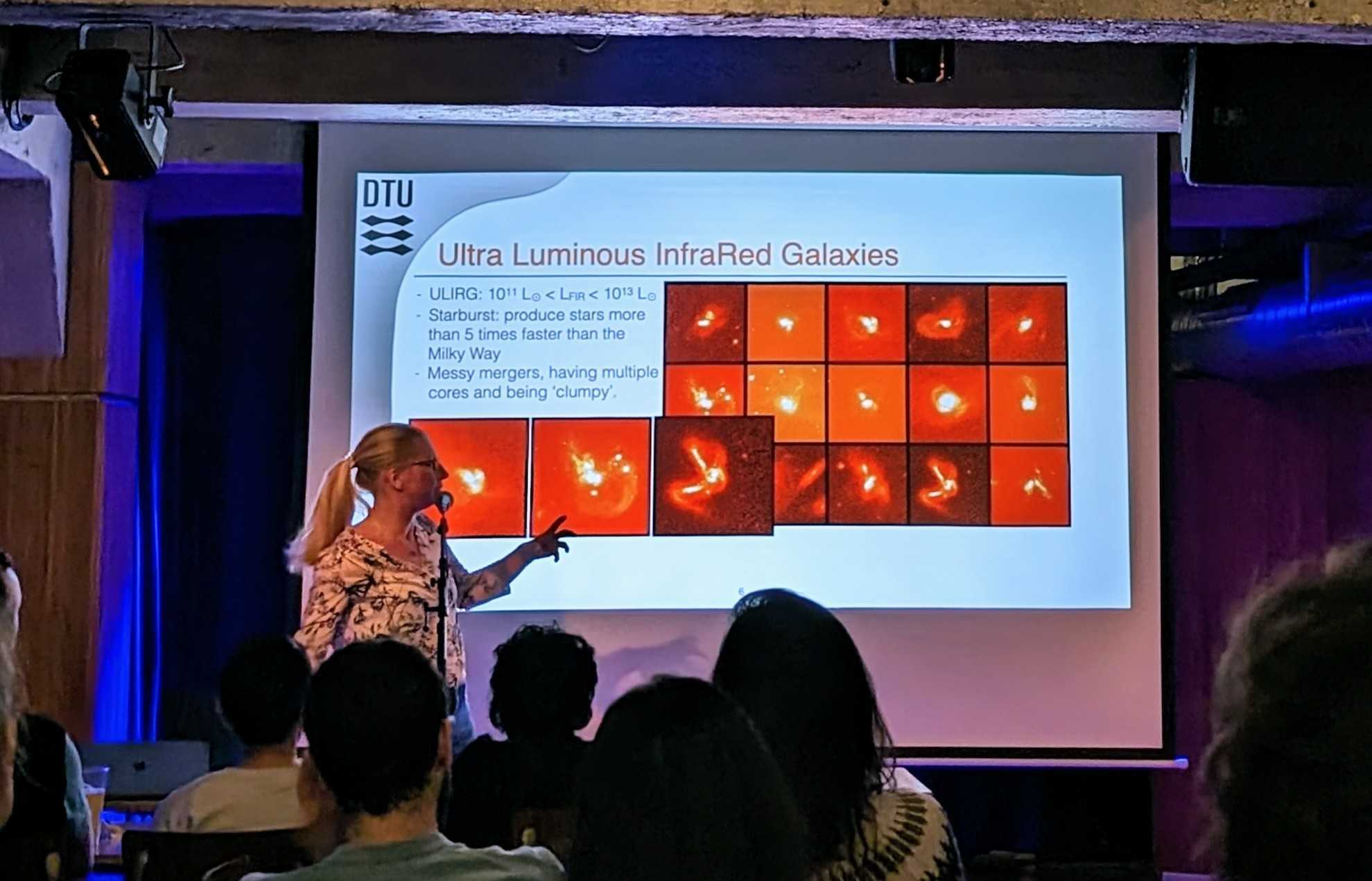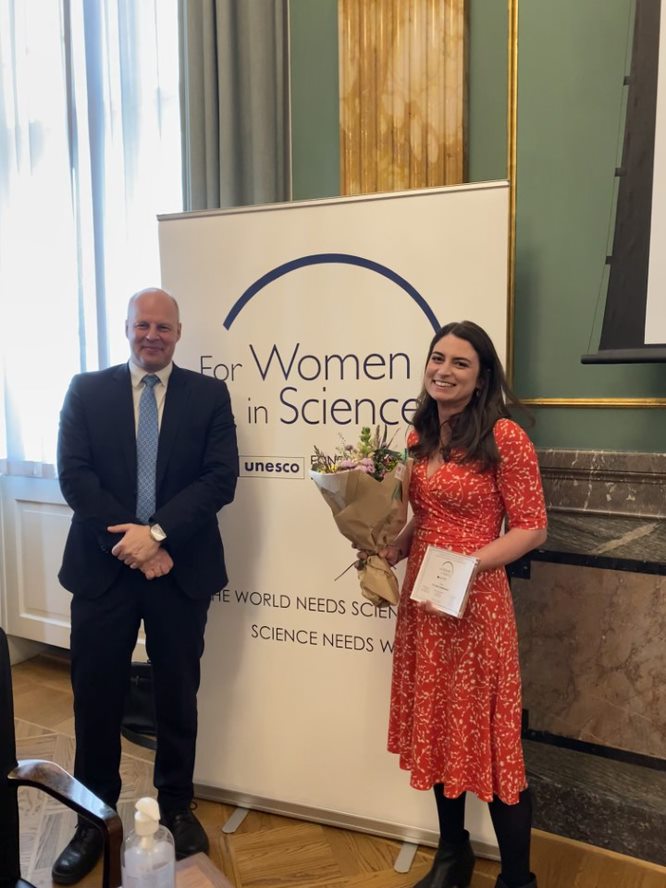Meet Vadim Rusakov - new member of the 1st Author Pub-Club!
 I am a PhD student interested in learning about galaxies and how they work
I am a PhD student interested in learning about galaxies and how they work
Ten years ago, when looking through the sky survey archives, my supervisor, Charles Steinhardt, and his colleagues found an object with inconveniently distinct features. It was a powerful supermassive black hole in one of galaxies 6.5 billion light years away, at the epoch when these objects were shutting off. The gas around such black holes is in a shape of a fiercely swirling donut composed of small blobs, which reveals through very distinct spectroscopic emission at thousands of kilometres per second. Although extremely fast, it is usually locked in its orbit or flows in and out in a predictable way. What the team of researchers found is that the gas in this curious case was escaping the black hole in a way that was almost too fast on the inside of the gas ring and too slow on the outside.
With the new data the team obtained, we got to look into this issue and draw up new ideas. To our surprise, almost all of the donut was flowing away at exactly the same large velocity except the outer edge. Imagine ten rows of trees in an alley getting blown by a strong wind. It would be fairly unexpected if nine of them were ripped out, while the tenth one just proudly bowed. This last row was off around the black hole too. Such outflow profile turns out to be a very specific signature of an explosion. Such explosions can happen only when stars die or get ripped apart by a supermassive black hole. For this idea to work, by conservation of energy the exploding star had to be 10,000 times more massive than the Sun to produce the observed effect. Stars nearly as massive have only been possible in theory, but never observed. Further observations and modelling of these gas clouds are required to either quickly rule out this crazy idea or find more clues to keep it alive. Regardless of the outcome, the ability to explain this evidence will likely expand our understanding of such systems in a way that we have not anticipated.
The problem in this publication is one of those that are clearly evident and sharply inconsistent with one's intuition. It is easy to get excited about it, as it likely leads to unexpected answers of relevant physical or otherwise purely serendipitous nature. This study suggests a new, “crazy" hypothesis, which is hard to prove but gladly has a few ways to reject it with more data or by invoking a modelling approach.

A fun fact: if a science career doesn’t ever work out, I shall become a filmmaker.
OPPORTUNITIES & CALLS
Webinars/Workshops/Conferences:
_________________________________________________________________________________________________________________
| ♦ SCIENCE: Marie Sk⫮odowaska-Curie Master Class (online) | 06-09 Jun | UCPH link |
| ♦ ADAM 2023 in Fredericia (Annual Danish Astronomy Meeting) | 07-08 Jun | Link is here |
| ♦ ERC Starting Grant - Introduction Online | 11 May | UCPH link |
| ♦ Workshop: Priming of Horizon Europe 2024 collab. work programs | 16 May | UCPH link |
| ♦ “First Light” Conference in Boston | 12-16 Jun | Link is here |
| ♦ The SCMA Conference (Penn State University) | 12-16 Jun | Link is here |
| ♦ Euclid Meeting 2023 | 19-23 Jun | Link is here |
| ♦ DAWN Summit 2023 | 26-28 Jun | TBD |
| ♦ Scientific Communication in Astronomy School 2nd Edition - Italy | 02-06 Oct | Link is here |
| ♦ "Young Astronomers on Galactic Nuclei" (YAGN23) in Italy | 18-20 Oct | Link is here |
Grants:
_________________________________________________________________________________________________________________
| ♦ EU Horizon Europe - ERC Advanced Grant | 23 May | ERC link | UCPH link |
| ♦ VILLUM Foundation/Young Investigator (preliminary) | 08 Jun | DTU link | UCPH link |
| ♦ Inge Lehmann’s Programme (DFF) | 21 Jun | DTU link | UCPH link |
| ♦ The Carlsberg Foundation: Semper Ardens: Accerlerate (preliminary) | 01 Oct | DTU link | UCPH link |
| ♦ The Carlsberg Foundation's annual call: Research Infrastructure | 01 Oct | DTU link | UCPH link |
| ♦ EU Horizon Europe - ERC Starting Grant (preliminary) | 25 Oct | DTU link | UCPH link |
| ♦ EU Horizon Europe - ERC Synergy Grant (preliminary) | 08 Nov | DTU link | UCPH link |
| ♦ EU Horizon Europe - ERC Consolidator Grant (preliminary) | 12 Dec | DTU link | UCPH link |






